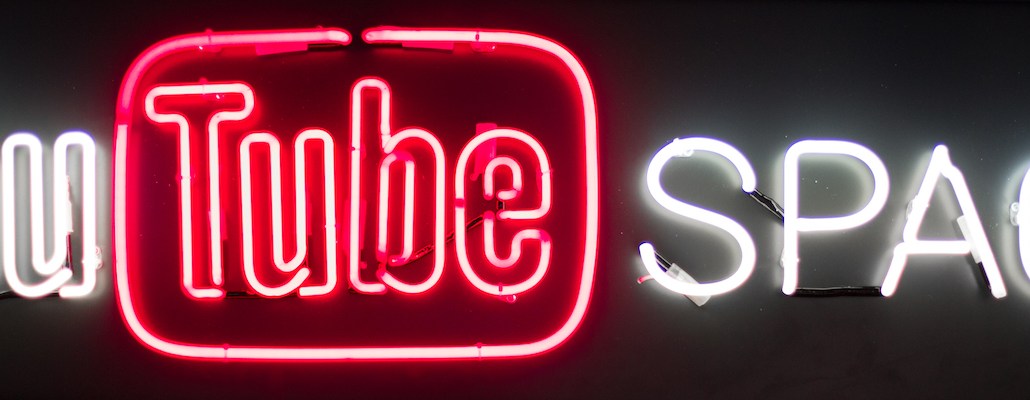Save 50% on a 3-month Digiday+ membership. Ends Dec 5.
YouTube’s new London studio is its latest weapon in an intensifying war for talent

Yesterday saw the grand re-opening of YouTube Space London, the video platform’s newest state-of-the-art production studio.
Here, creators with more than 10,000 subscribers can film videos in VR and 360-degrees in soundproofed rooms and chop them up in dedicated editing suites free of charge. It’s one of nine such spaces around the world, and YouTube’s biggest in Europe. It’s also the platform’s newest weapon in the online talent war.
Speaking at Tuesday’s opening, YouTube’s European director Ben McOwen Wilson quipped that the “unimaginably expensive” equipment served one purpose: to nurture talent. The same talent that have been the rocket fuel behind the platform’s growth to over a billion users.
“It’s a huge signal to the talent that we love them and we want them to carry on building their relationships on our platform,” he told the crowd.
But since the launch of the original London YouTube Space five years ago on Tottenham Court Road, much has changed. Now it has serious competition from the likes of Facebook, Snapchat and Twitter as social platforms pile into video.

Simon Bibby, co-founder of social video intelligence firm Burst Insights, says the platform has been in a “buyer’s market mindset” for a long time, but being an influencer is easier than ever now.
Ad position: web_incontent_pos1
“YouTube doesn’t have the same brand affinity with the younger generations. It’s not where their friends hang out and not the first place that they reach for when on their mobile devices,” he said.
Meanwhile, creators are now being wooed elsewhere. According to Bloomberg, Twitter’s new video ad platform, Amplify, offers creators 70 percent of revenue. Amplify’s head of content partnerships, Mike Park, has already hired YouTube insiders with links to the platform’s talent.
Facebook has been paying a number of content creators to make video for products like Facebook Live. According to a document unearthed by the Wall Street Journal, it’s already attracted YouTube stars like Ray William Johnston and Elise Strachan with a $2.2 million sweetener to encourage experimentation on the platform.

YouTube content is now being squeezed by the platforms’ native video formats too. “Facebook and Twitter used to support YouTube videos in timelines. Now they are punishing you if you post YouTube links,” explains Steve Bartlett, CEO of marketing agency Social Chain. Having to click through a thumbnail that takes you off the platform “breaks the viral leap,” while autoplay videos can be consumed and shared instantly.
Ad position: web_incontent_pos2
For him, YouTube had its heyday roughly a year ago, and it’s now the “forgotten product” in pitch meetings. Instead, the reach of social platforms is tempting advertisers.
“Not too long ago, it was the best way to get video views, but it’s been pushed lower down in reaching brands’ KPIs. It’s so much easier to get 100,000 Facebook likes than 100,000 YouTube subscribers.”
YouTube, for its part, is not staying silent. In addition to opening YouTube production facilities, which offer everything from production equipment to classes on how to grow an audience on the platform, the company is buying films and TV shows from its homegrown talent for its YouTube Red subscription service. It’s also constantly rolling out new features, including the ability to stream live from mobile devices. It’s all part of an effort to keep YouTubers active on YouTube.

One thing YouTube has that Facebook lacks, at least for now, is a passionate community. Influencers are using other platforms like Facebook as a means to grow their audience, but keeping YouTube as their main channel, according to Alex Brinnard, a YouTuber and co-editor of TenEighty, a news site for the U.K. YouTube community.
“On YouTube, maybe 15 to 20 percent of my subscribers will watch a video,” he said. “But even though I have only 4,000 likes on Facebook, 50 percent of fans will see it. The reach is so much greater on there, but they still have a long way to go to build a community.”
Plus, YouTube’s elite can still charge large sums for the premium content that flourishes on the platform.
Even though they are striking deals and growing their audience elsewhere, YouTube Space artists are already booking with VR shoots and music videos. “I don’t think we’ve seen the eclipse of YouTube as an influencer platform yet, and it may never happen” said Bibby. “The reach of YouTube is undeniable, but influencers are definitely becoming more platform-agnostic now. They can’t afford not to be.”

More in Media

Digiday+ Research Subscription Index 2025: Subscription strategies from Bloomberg, The New York Times, Vox and others
Digiday’s third annual Subscription Index examines and measures publishers’ subscription strategies to identify common approaches and key tactics among Bloomberg, The New York Times, Vox and others.

From lawsuits to lobbying: How publishers are fighting AI
We may be closing out 2025, but publishers aren’t retreating from the battle of AI search — some are escalating it, and they expect the fight to stretch deep into 2026.

Media Briefing: Publishers turn to vertical video to compete with creators and grow ad revenue in 2026
Publishers add vertical video feeds to their sites to boost engagement, attract video ad spend and compete with news creators.
Ad position: web_bfu
